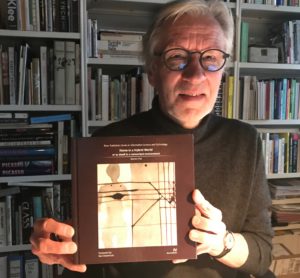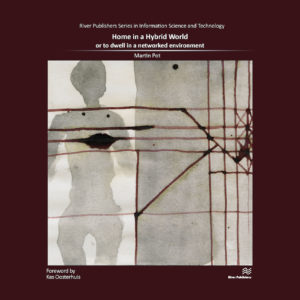Het zijn steeds frequenter terugkerende pleidooien, vooral nu rond de verkiezingen: teneinde de situatie in de landbouw op te lossen volstaat het niet uitsluitend de hoeveelheid vee te reduceren, teneinde de situatie in de gezondheidszorg te verbeteren volstaat het niet meer geld ter beschikking te stellen, teneinde ons voor te bereiden op een mogelijke of zelfs te verwachten zeespiegelstijging volstaat het niet om alleen de dijken te verhogen, teneinde de woningnood op te lossen volstaat niet uitsluitend het bouwen van meer huizen. Veel belangrijker is een structurele overdenking van deze thema’s en het formuleren van een visie, gebaseerd op hoe wij onze samenleving zien, willen inrichten en vormgeven; nu maar vooral straks.
Het is daarom des te merkwaardiger dat deze oproep niet veel hoor- en zichtbaarder wordt gedaan als het gaat om onze huisvesting; als het gaat om te bouwen woningen zijn al jaren de (arbitraire) aantallen leidend en wordt het ‘antwoord’ veelal geformuleerd door projectontwikkelaars en nu ook bedrijven in de vorm van het industrieel bouwen van meer van het traditionele en meer van hetzelfde; met uiteraard respect voor de kleinschalige initiatieven van innovatieve architectenbureau’s. Enige fundamentele overdenking over waar, hoe en wat er dan voor wie gebouwd zou moeten worden ontbreekt doorgaans, het is een rationeel – met name economisch gefundeerd – antwoord op een in essentie steeds meer gevoelsmatige vraag: hoe zien en hoe beleven wij ons wonen in de (nabije) toekomst. Lees verder
Categoriearchief: writings
de grote schaal en de kleine schaal
de grote en de kleine schaal.
Iedere inwoner van ons land, in een stad, dorp of buitenaf heeft te maken met de gevolgen van keuzes die eerder, nu en later zijn en worden gemaakt op ruimtelijk gebied; met name op stedenbouwkundige plannen en architectonische vervolgen, op meerdere en verschillende schaalniveau’s. Naarmate het schaalniveau toeneemt wordt de invloed van de bewoner kleiner; maar ook op het kleinste niveau – de woning – heeft de bewoner nog altijd een slechts marginale en vooral cosmetische invloed. Wij allen echter ‘wonen’.
Op 6 juli j.l. vond in Theater Zuidplein Rotterdam de ‘Dag van de Ontwerpkracht’ plaats, georganiseerd door Platform Ontwerp NL. Hoewel ‘ontwerpkracht’ bij velen de indruk zal wekken dat het hier gaat om kleinschaliger elementen lag de nadruk op deze drukbezochte bijeenkomst toch vooral op de grotere schaal. Adriaan Geuze (West-8) stelde dat een ‘systemische benadering voor de grote opgaven’ nodig is, diverse ontwerpbureau’s verbeeldden projecten op landelijke schaal voor het jaar 2100, DG-Ruimtelijke Ordening Marjolein Jansen benoemde daarnaast de kracht van communities: “We bouwen geen huizen om huizen te bouwen maar om gemeenschappen te stichten”. Saskia van Stein (‘Ministerie van Maak’) benadrukte nog eens: ‘Met verbeeldingskracht kunnen we voorsorteren op wat komen gaat’, een terechte oproep de huidige problemen niet te beschouwen als te complex en daarmee onoplosbaar, zoals ook tijdens de IABR dit jaar duidelijk werd geïllustreerd.
Deze dag was georganiseerd door en voor ‘ontwerpers’, kortom allen die zich bezighouden met de planning, inrichting en vormgeving van ons land, op welke schaal dan ook. Tezelfdertijd: de ‘te stichten gemeenschappen’ waarvoor zij ontwerpen en bouwen maken geen deel uit van deze discussies en planvorming terwijl wij allen wel ‘wonen’ in de tastbare resultaten. Een ‘systemische’ benadering vereist dat niet alleen professionals maar vooral ook burgers zich bewust zijn van de noodzaak tot ieders verbeeldingskracht en deze ook tot uitdrukking kunnen brengen. Zolang de discussie en vormgeving van onze – fysieke – omgeving uitsluitend wordt overgelaten aan ‘professionals en/of deskundigen’ zal er geen sprake zijn van betrokkenheid en participatie, laat staan van een gedeeld en geaccepteerd resultaat.
Lees verder
Gestandaardiseerd wonen?
Gegeven de taak van vrijwel elk willekeurig economisch instituut is het te begrijpen dat het zich in haar onderzoeken en rapporten focust op de economische aspecten van een gekozen onderwerp. Wanneer het echter een onderwerp onderzoekt waarvan het resultaat uiteindelijk ons allen aangaat en daarbij ook nog een essentieel onderdeel van ons dagelijks leven vormt, dan dreigt een uitsluitend economisch zwaartepunt toch enigszins eenzijdig te worden.
Het recente rapport ‘Industrieel Bouwen en de Bouwarbeidsmarkt’ van het EIB (mei 2023) over kant-en-klare woningen is een actuele verslaggeving rond de huidige situatie van woningbouw ‘uit de fabriek’. Ik zeg met opzet ‘woningbouw’ want dat is de term die in het rapport wordt gebruikt, in tegenstelling tot ‘huisvesting’. Dat mag een futiel semantisch onderscheid lijken, maar dat is het m.i. niet. De wijze waarop wij in ons land nog altijd in huisvesting voorzien is door het bouwen van complete huizen, niet door het faciliteren van wonen. Anders geformuleerd: het uiteindelijk belang en waarde van huisvesting is primair het (be)wonen door de bewoner(s), nu en in de toekomst en gezien het feit dat wij deze toekomst niet kennen is elk antwoord in de vorm van een finaal bouwkundig eindproduct een inadequaat antwoord op een onbekende vraag.
Het bouwen in de fabriek met als eindresultaat een complete woning is proces-innovatie, geen product-innovatie; het eindresultaat is feitelijk hetzelfde als een traditioneel gebouwd huis, de bewoner speelt geen enkele rol, nu niet en later niet. Dit wordt geïllustreerd door de constatering in het rapport dat ‘industriële woningbouw niet voldoet aan de specifieke eisen van de ontwikkelaars’ terwijl tezelfdertijd het belang van de bewoner, nu dan wel later vrijwel nergens ter sprake komt. Daarmee wordt het eenzijdig; we bouwen niet omwille van het bouwen, maar om te voorzien in huisvesting, ook en vooral voor de lange(re) termijn.
Woningen in ons land hebben een leeftijd van ca. 120 jaar; tezelfdertijd hebben we geen realistisch of onderbouwd idee hoe onze wereld er uit ziet over 25 of 50 jaar. Als het rapport dus spreekt over ‘specifieke doelgroepen’ is dit een momentopname; we weten simpelweg niet welke ‘doelgroepen’ over 25 of 50 jaar relevant zijn. Wonen is een wonen in de tijd.
Kortom; de enige manier om te voorzien in langdurige aanpasbaarheid en duurzaamheid is een scheiding (zie J.Habraken, S.Brand, B.Leupen) van drager en inbouw waarbij een essentiële rol is weggelegd voor industrieel – modulair – bouwen van vooral dat laatste.
Het rapport verstaat onder industrieel bouwen “een bouwmethode waarbij woningen fabrieksmatig worden geproduceerd. Dit gebeurt seriematig met als eindproduct een gestandaardiseerde woning.” (p.15). De constatering dat ‘slechts een beperkt deel van de woningen geschikt is voor deze bouwmethode’ illustreert het probleem; bij een breed toepasbaar modulair/industrieel systeem maakt de typologie van de woning niet uit. De gerechtvaardigde vraag naar andere woonvormen zoals coöperaties, tiny-houses, groepswonen enz. kan ook niet worden opgelost binnen de al decennia gebruikte abstracte criteria die ons wonen bepalen; kortom, een ‘gestandaardiseerde woning’ kan niet het antwoord op een gevarieerde vraag zijn. Een ‘standaard’ woning kan slechts een kader voor ons wonen zijn.
Deze column werd geschreven in reactie op een artikel op Archidat , juni 2023.
boekbespreking
Een interessante inhoudelijke en adequate bespreking van mijn boek op de website van Rooilijn, het online platform voor ruimtelijke ordening en gebouwde omgeving. Veel dank aan Gerben Helleman……….:-)
Home in a Hybrid World, an interview
On July 5th. 2021 I have had a long, fine and thoughtful talk/interview/discussion with interior-architect Roger Haan, on behalf of the BNI, the Dutch Association for Interior Architects. This talk is now (in Dutch only) online available:
’technologie gaat ons (niet) redden”
Mede in het kader van het Stadsmakerscongres organiseerde AIR op 22 april 2021 een ‘expert-sessie’. rond technologie en architectuur; in mijn recente boek een belangrijk thema. Drie presentaties/lezingen van mij (Martin Pot), Johan Hanegraaf (ARKIO) en Wessel van Beerendonk (Studio RAP) dienden als inleiding tot een boeiend debat, gemodereerd door Leon van Geest. Thijs van Tetering maakte een verslag: met dank voor de fraaie illustraties….
boekbespreking
Interessante benadering en recente bespreking van mijn boek door (architectuur)filosoof Eric Bolle op zijn website….
interview
now online; my interview last week with RIVER Publishers’ Philippa Jefferies about my recently published book, also available via open-access at RIVER Publ. A brief talk about home, housing, technology and dwelling; to end with an actual part about the consequences for our housing caused by the current corona pandemic. It illustrates once more that the way we built our housing needs much more flexibility and adaptability.
Home in a Hybrid World, a book published
After some delay at the publisher mainly caused by corona my book is finally ready and accessible for download; many sincere thanks to all artists (Antony Gormley, Carlijn Kingma, Marwan Rechmaoui and Rob Voerman), reviewers Marja Elsinga, Frans Vogelaar & Elizabeth Sikiaridi, Gerald Santucci, Ruud Hazes and Tijmen Wisman and various column-writers who contributed to this final result. I look forward to the discussions and further developments, aiming at a structural change when it comes to (re)thinking and building our housing in a networked environment. This website will, in the coming months, also be devoted to the further discussions following reading by as many researchers, artists and the professionals possible.

see: RIVER Publishers

Home in a Hybrid World; finalized, at last….
Finally; the last proofs/samples for the book are agreed upon, set and done and the frontcover is ready. Again, many thanks to Antony Gormley for the use of one of his fine images, likewise to Carlijn KIngma, Marwan Rechmaoui and Rob Voerman. Publication is set for January 15th.; for digital version we try to become public sooner.

